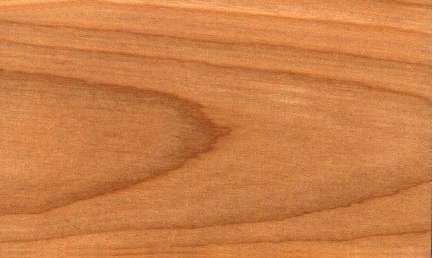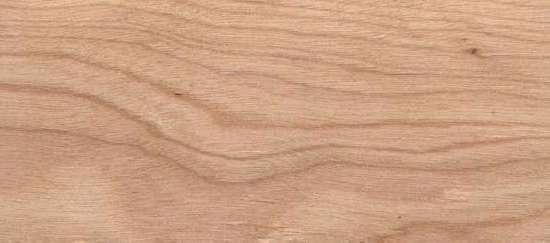 
Sweet birch (Betula lenta)
Family: Betulaceae
Common names: Birch, Black birch, Cherry birch, Sweet birch
Distributed in: Canada, United States (North America)
Distribution overview: The growth range extends from southern Maine, west to New York, New Jersey and eastern Ohio, south mostly in the mountain areas, including Pennsylvania, West Virginia, Virginia and Kentucky to the western portions of North Carolina, the extreme northwest South Carolina, northern Georgia, Alabama and eastern Tennessee. In Canada, it is found in limited numbers in eastern Ontario and southwestern Quebec. It grows best in the ancient forest loam and can almost always be found near mountain streams at the head of coves where its deep, smooth, mahogany-red bark stands out. The tree can also be found on rocky, boulder- strewn sites in spite of its need for nourishment. On poor soil, it is apt to be shrubby and have a stunted appearance.Estimated to range from Cool Temperate Moist to Wet through Boreal Moist to Wet Forest Life Zones, and to tolerate annual precipitation of ca 6 to 15 dm, annual temperature of 5 to 12C, and pH of 4.5 to 7.5. Farther south in rich woods and heath balds.
Common uses: Boxes and crates, Building materials, Butcher blocks, Casks, Chairs, Chests, Concealed parts (Furniture), Cooperages, Core Stock, Cutting surfaces, Decorative veneer, Desks, Dining-room furniture, Dowell pins, Dowells, Drawer sides, Drum sticks, Figured veneer, Fine furniture, Floor lamps, Furniture , Furniture components, Furniture squares or stock, Hardwood distillation, Hatracks, Interior construction, Kitchen cabinets, Living-room suites, Musical instruments , Office furniture, Organ pipes, Packing cases, Paneling , Piano keys, Pianos , Plain veneer, Radio - stereo - TV cabinets, Rustic furniture, Sounding boards, Stools, Veneer
Environment profile: Secure in many areas of its range
Tree size: Trunk diameter is 150-200 cm
Colors: the heart isRed, Yellowand the sapwoodWhite, White to yellow.The grain isGenerally straight, the textureMediumand the lusterLow
Natural durability: Perishable, not resistant to decay
Odor: No specific smell or taste
Kiln Schedules: T8 - C3 (8/4) US
Drying Defects: Internal Honeycombing Possible, Warping can be expected
Ease of Drying: Thick Stock Requires Care
Comments: Generally hard, heavy, strong, high resistance to shock
Blunting Effect: Little
Boring: Good results
Carving: Fair to Good Results
Cutting Resistance: Easy to saw
Gluing: Very Good to Excellent Results
Mortising: Exceptional mortising properties
Nailing: Poor nailing properties, Very Good to Excellent
Planing: Fairly Easy to Very Easy
Resistance to Impregnation: Wood is moderately resistant
Response to hand tools: Responds Readily
Sanding: Fairly Easy to Very Easy
Veneering qualities: Can be sliced into highly decorative veneer for cabinets, Rotary cutting will yield a growth ring pattern of darker, reddish-brown veins
Steam bending: Fair/moderate
Screwing: Poor screwing properties, Very Good to Excellent Results; Turning: Fairly Easy to Very Easy
Painting: Fairly Easy to Very Easy; Polishing: Very Good to Excellent; Staining: Very Good to Excellent; Varnishing: Fairly Easy to Very Easy;
- Numerical data Metric
- Numerical data English
- Strength properties
- References
 |
 |
 |
 |
| Item |
Green |
Dry |
Metric |
| Specific Gravity |
0,55 |
0,6 |
|
| Density |
|
|
kg/m3 |
| Bending Strength |
647 |
1164 |
kg/cm2 |
| Crushing Strength |
32 |
74 |
kg/cm2 |
| Hardness |
|
653 |
kg |
| Impact Strength |
119 |
116 |
cm |
| Shearing Strength |
|
154 |
kg/cm2 |
| Stiffness |
113 |
149 |
1000 kg/cm2 |
| Tangential Shrinkage |
9 |
|
% |
| Radial Shrinkage |
6 |
|
% |
| Weight |
|
|
kg/m3 |
| Maximum Load |
1,12 |
1,26 |
cm-kg/cm3 |
| Toughness |
|
|
cm-kg |
| Static Bending |
|
|
kg/cm2 |
|
 |  |  |  | | Item | Green | Dry | English | | Bending Strength | 9212 | 16562 | psi | | Crushing Strength | 461 | 1058 | psi | | Hardness | | 1441 | lbs | | Impact Strength | 47 | 46 | inches | | Maximum Crushing Strength | 3665 | 8369 | psi | | Shearing Strength | | 2195 | psi | | Stiffness | 1617 | 2127 | 1000 psi | | Work to Maximum Load | 16 | 18 | inch-lbs/in3 | | Specific Gravity | 0.55 | 0.6 | | | Radial Shrinkage | 6 | | % | | Tangential Shrinkage | 9 | | % | | Volumetric Shrinkage | 15 | | % | |
Resists denting and marring
Hardness = medium
Compression strength (parallel to grain) = very low
Bending strength (MOR) = very high
Boone, R.S., C.J. Kozlik, P.J. Bois, E.M. Wengert. 1988. Dry Kiln Schedules for Commercial Hardwoods -Temperate and Tropical. USDA, Forest Service, General Technical Report FPL-GTR-57, Forest Products Laboratory, Madison, Wisconsin.Flynn Jr., J.H. Betula lenta - Sweet birch. In A Guide to Useful Woods of the World. Flynn Jr., J.H., Editor. King Philip Publishing Co., Portland, Maine. 1994. Page 65-66.HMSO, 1981. Handbook of Hardwoods, 2nd Edition. Revised by R.H. Farmer. Department of the Environment, Building Research Establishment, Princes Risborough Laboratory, Princes Risborough, Aylesbury, Buckinghamshire.Kaiser, J.Wood of the Month: American Birch - A Furniture Favorite.Wood and Wood Products, February, 1993.Page 30.Kloot, N. H. and E. Bolza.1961.Properties of Timbers Imported into Australia.Technological Paper No. 12.Division of Forest Products, Commonwealth Scientific and Industrial Organization, Melbourne, Australia.Little, E.L.1980.The Audubon Society Field Guide to North American Trees - Eastern Region.Published by Arthur A. Knopf, New York.Panshin, A.J. and C. deZeeuw. Textbook of Wood Technology. McGraw-Hill Series in Forest Resources. McGraw-Hill Book Company, New York.USDA. 1987. Wood Handbook:Wood as an Engineering Material. Agriculture Handbook No. 72. United States Department of Agriculture, Forest Service, Madison, Wisconsin.USDA. 1988. Dry Kiln Operators Manual, Preliminary Copy. Forest Service, Forest Products Laboratory, Madison, Wisconsin.
|









